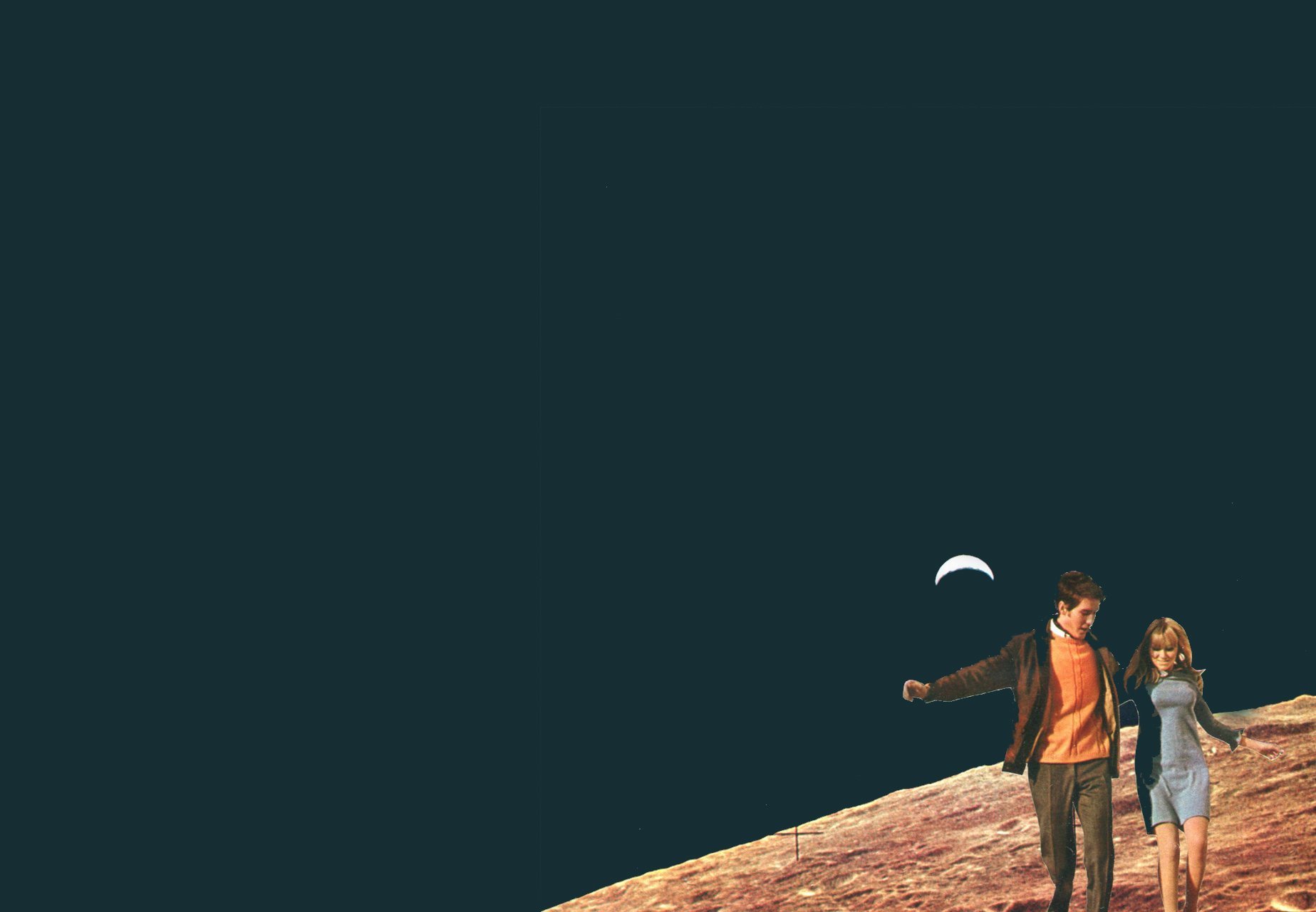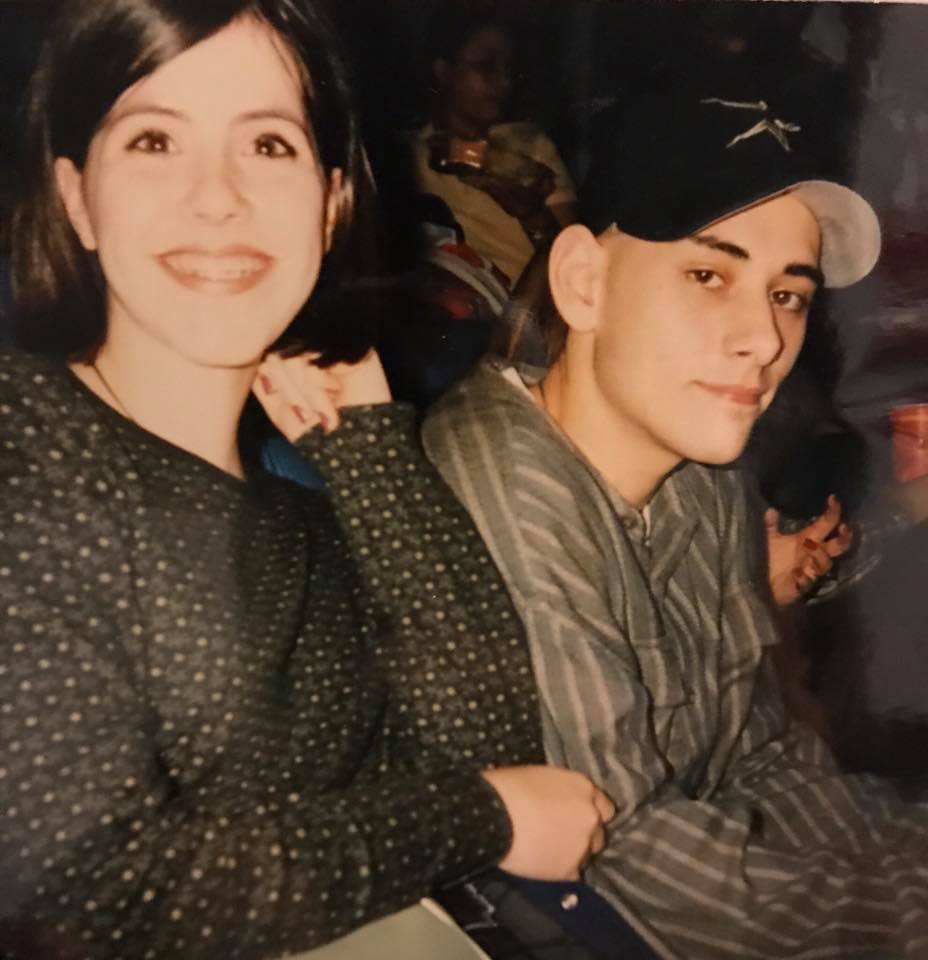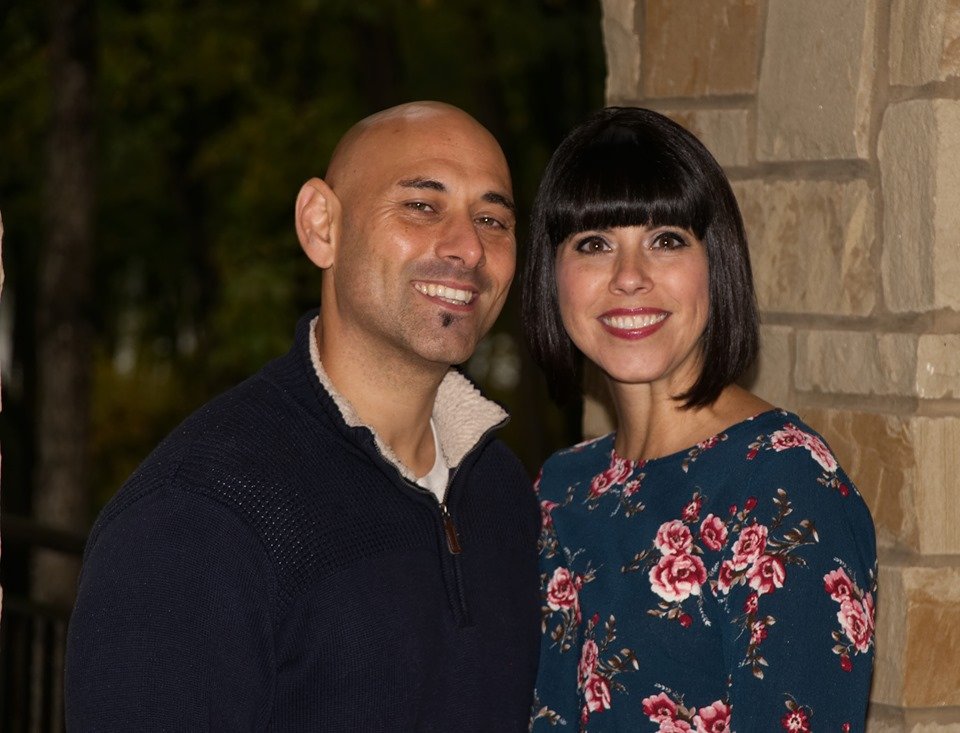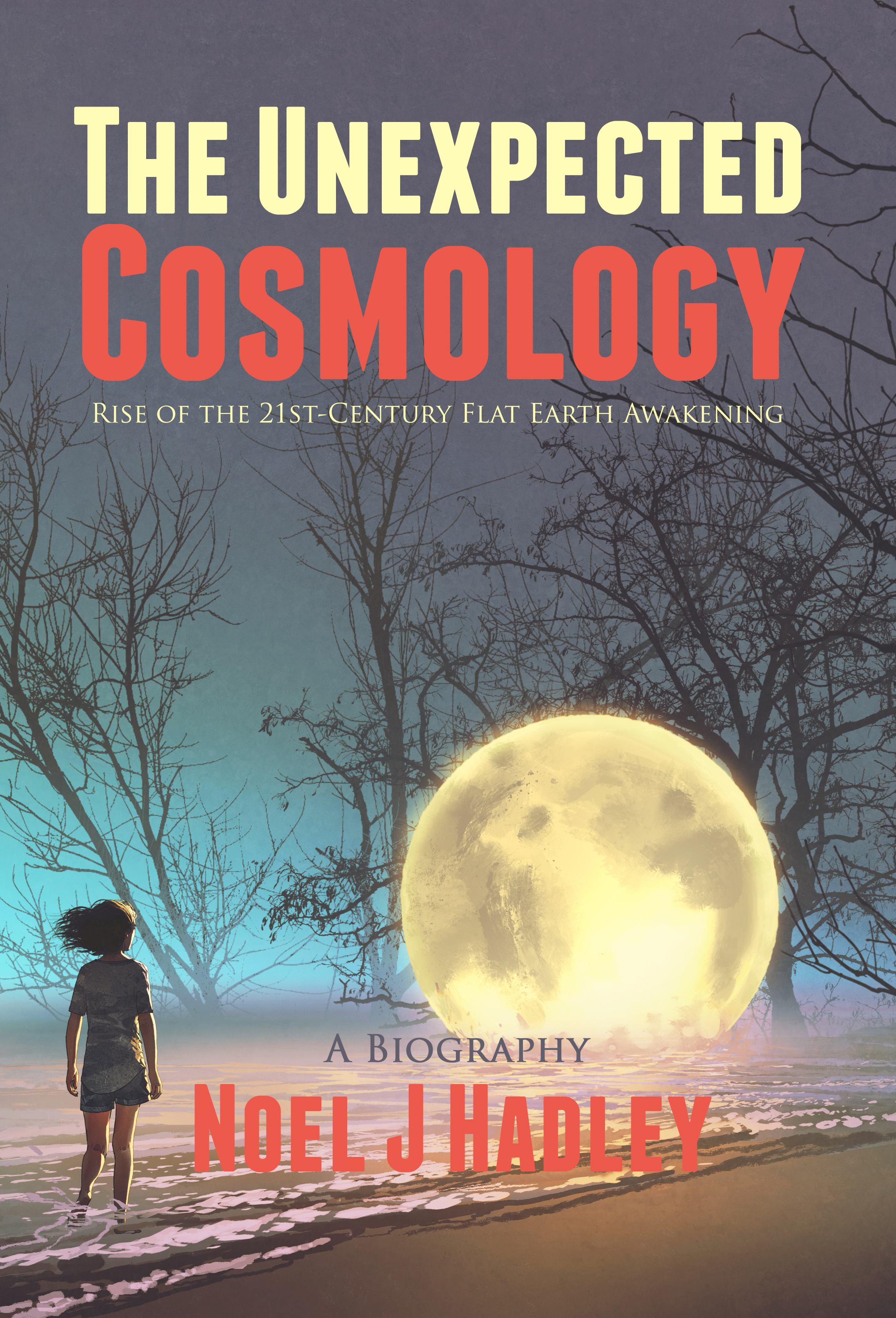MR. NELSON’S CLASSROOM | Cleveland’s Hidden World of Geocentricism (with Chris & Liz Bailey)
1
WHEN ASKED, LIZ BAILEY CAN STILL RECITE the date with regimented smoothness, as though she were simply taking a butter knife slathered with raspberry jam to bread. I inquired. June 21, 1996—that’s the occasion in which fifteen year-old Liz Rolen asked the new kid in school out on a date.
“And I was quite forward,” she said.
The most peculiar, and dare I say awkward, perhaps even scandalous incident of all however follows Chris Bailey around on the calendar like an incurable meeting with childhood asthma. “Your readers are going to love this,” Chris seemed to bemoan having to surrender the date of his birth. He was born on October 31, 1978—Cleveland, Ohio.
Liz said, “His mother chose that date, believe it or not.”
Chris protested over the phone.
“No, you don’t need to say that!”
Liz took that as an open door policy to continue. She laughed and then said: “She was done with the pregnancy and had a C-section,” and apparently wasn’t even thinking of the day. “But I just find it so comical.”
From my end of the receiver, it took me precisely this long in the conversation to figure out the significance of the thirty-first—actually longer. I undoubtedly wrinkled my forehead while chewing on a pen, and then then stated as a matter of fact, “So you were born on Halloween,” and yet would not understand the full brunt of Bailey’s inconvenience until I finally pronounced all three syllables.
Hall-O-Oh—
Chris joined in with his wife’s laughter.
He said: “And then when you say that my mom chose that date, then you start putting connections together. People go, ‘there’s a big conspiracy here.’”
Liz: “Because somebody is always looking for a conspiracy.”
Chris, I assume, spoke sarcastically when he ad-libbed, “Well, that’s my mom’s story.”
Elisabeth Ann Rolen was born on April 16, 1981—also Cleveland. “We both went to a very strict conservative school,” she said. That would be Heritage Christian School. “I was there ever since preschool.”
It was during Chris Bailey’s sophomore year that a short month-long stint in public school sent him right back into the private sector again. That would be Heritage Christian School, “and where our story began,” he said. It’s not only the intersection of their lives, but “our very first year of learning about geocentricity.”
His name was Mr. Nelson.
Ron Nelson.
Mr. Ron Nelson was a geocentrist.
By the time Rolen and Bailey entered his classroom in the mid-nineties, Nelson had already been teaching at the school, Liz said, “probably since the late seventies. His science curriculum—he taught all the sciences from earth science to physics to chemistry, all of it. And his textbook, what we learned from, it wasn’t even a textbook. It literally was typed out on an old fashioned typewriter, notes directly from the Bible. So everything that he’d derived came from Scripture, and that’s how we were taught sciences.”
Mr. Nelson “taught the Biblical model of the earth,” Chris said. “He taught that the earth, first and foremost, that the earth was the center of the universe. So that was the very aspect of what he taught. And ultimately that came with, the earth did not rotate. So he taught the Biblical model first and foremost, and then everything else followed.”
“And he backed it up with Scripture,” Liz said. “We had to memorize Scripture—fully dig into all of that and understand it.”
Liz still has the binder from Mr. Nelson’s class in her possession. Even then as a teenager “I knew that it was something special. I knew I would never find this again—ever. And I just kept it, when normally at the end of the school year you’d burn all your books and throw them away. I kept those.” The very first chapter in her three ring binder, “even before we’d get into anything about earth science, he had—the beginning chapter was all about subliminal messaging, and what the media would put out, back then, through TV, through newspapers, through magazines, ads and all of that, on how they were causing a massive deception, and how we need to be able to look through all of that—look beyond the subliminal messaging.”
“That church didn’t even want you to have a TV,” she continued. “They were extremely strict, conservative, fundamental Baptist. So part of our rule book to go to the school, we really weren’t allowed to go to movies, listen to secular music.”
Here Chris inserted, “Listen to Christian music like rock.”
“Yeah, even contemporary Christian music of the time like Michael W. Smith or DC Talk, those were huge no-no’s, because the devil was in the beat, according to them. The dress code was extremely strict. The girls had to wear skirts below our knees. Shirts had to have sleeves. They couldn’t be low cut. We couldn’t dye our hair. We really couldn’t wear a lot of make-up. We couldn’t wear high-heeled shoes. It was strict.”
Here it should be noted that Liz Rolen was a varsity team cheerleader. Liz described her uniform as something quite comical. “They’re known as culottes. Super long skirts sewn in the middle—mid calf. We had some looks going out in public. We had to wear some body suites and spandex underneath. So if we were to do a high kick or climb up onto a pyramid, nobody could see any flesh—whatsoever. It was comical. But that’s what we grew up in. At the time we lived in this bubble, essentially. We knew we were odd. But we also grew up knowing that we were Christians, and that we were made to be set apart. So we shouldn’t look like the world, act like the world, that type of thing.”
“But for the most part Chris and I were really good students, and Chris coming to the school—each class had about 20-30 kids; his class was actually the largest. It had like 37. So super small, and whenever there was a new kid that came to the school, they were the talk of the town.”
Bailey was the talk.
The new kid even landed on the basketball team. Cheerleaders had to pick the guy they’d root for, and naturally, Liz picked the new guy.

2
THOUGH SURVIVORS OF THE SIXTIES might struggle to agree, there is nothing new under the sun—absolutely nothing. This is why, in 1967, while kids reenacted age old rites of the Eleusinian Mysteries by tripping at the Monterrey Pop Festival; while NASA worked feverishly on the Apollo program, finally blending the promises of Science with the spiritual ambitions of ethereal exploration in the Mysteries of Babylon and Isis; while Israel combated its momentous Six Day War; the modern resurgence of Geocentricity reentered the stage; Cleveland, Ohio, of all places—though few were privy to it. Born in 1913, Walter van der Kamp had already immigrated to Canada from the Netherlands in 1955. But it wouldn’t be until 1967 that van der Kamp put his name on the map, so to speak, when he circulated a geocentric paper entitled “The Heart of the Matter” to about fifty Christian individuals and institutions.
“He was teaching the geocentric model to earth scientifically,” Chris said. “Biblically, teaching it to pastors, churches—anybody that was prestigious who would listen.” Van der Kamp received only four favorable responses. Canadian astronomer Harold L. Armstrong was among them. Soon however two Cleveland astronomers, James Hanson and Gerardus Bouw, would number themselves among his early converts.
Meanwhile, in San Diego, California, Dr. Henry Morris dismembered gap theorists everywhere by bringing young earth creationism back to the forefront of evangelicalism. Morris omitted the natural revelations of geology and biology as antithetical to the gospel while promising his key supporters to keep the natural revelation of astronomy fully intact. The Bible could and would be adjusted to make them fit. In doing so, Morris simultaneously helped to bolster, even glorify the Apollo missions. It is perhaps for this very reason that van der Kamp and his disciples, like flat earthist Samuel Shenton, failed to rally support. When geocentrism returned, so did young earth creationism. Van der Kamp founded The Tychonian Society in 1971, the very year of Shenton’s death. Morris founded the Institute for Creation Research in San Diego the year thereafter, in 1972. One doused out the flames of the others. For the following generation, evangelicalism had found its spokespersons.
Van der Kamp’s Tychonic system, first published by Tycho Brahe in the late 16th century, is conceptually at its core a geocentric model of the cosmos, with the immovable Earth at its center; but only so much as it is a response to the Copernican revolution rather than a mere adjustment of the Ptolemaic because, though the sun also moves around the Earth in Ptolemy’s universe, the five planets revolve around the sun in Tycho’s. In fact, Tycho’s planets are so much like the motion of the heliocentric model that the two are in fact mathematically equivalent and indistinguishable from the other as long as no force law is postulated to explain why the planets move as described. At this point of reasoning, mathematics alone presents no argumentation against either the Tychonic or the Copernican system.
From these seeds grew the Tychonian Society and its journal, The Bulletin of the Tychonian Society. “Cleveland Ohio is what I call the Mecca for modern geocentricity,” Bailey said. “The men who started writing this ended up being college professors of astronomy, head of astronomy, of places like Cleveland State University, Baldwin Wallace, and Case Western Reserve. Those are the top colleges right here in Ohio, right here in Cleveland.”
Ironically, the Michelson-Morley experiment took place at Case Western. “And obviously we know what happened there. They failed to prove that the earth spun. They proved potentially the geocentric model.” From the 1960’s through the 1980’s, “the head of astronomy was a full blown Geocentric Biblical believer teaching this model in schools, obviously the heliocentric model as well—not flat earth whatsoever. Gerardus Bouw eventually took over the Biblical publication that was being produced right here in Cleveland. It was a publication that went all around the world, and they were the only geocentric publication,” comparably similar to Lady Elizabeth Blount’s flat earth publication in the late 19th century, The Earth Is Not a Globe. “They were doing the same exact thing, bucking the system against Science, and basically telling you: ‘They’ve got this wrong, they’ve got this wrong. Okay, the earth isn’t flat.’ But they started there.” Bouw “eventually went to Baldwin Wallace University, which just so happens to be five minutes from our house, where we’re at now. And he’s still living. He teaches at a church in Aurora, Ohio. And that publication stopped in 2014. But that was the early work of getting us to think differently about the earth.”
The breadth of Bouw’s work truly is remarkable. His website, geocentricity.com, “has 1,903,523 pages, not counting all the PDF’s—all geocentricity. So when somebody wants to get into depth, when they say there’s not enough proof for geocentricity, then we’ve got almost 2 million pages that support this.”
Chris said, “All of this was coming out of Cleveland, Ohio. Our high school teacher, we now know that Professor Gerardus Bouw went to the church associated with Heritage. We now know there’s a geocentric connection between these men and our high school teacher.”
Mr. Ron Nelson.
“Oddly enough,” Liz said, “Cleveland Baptist was the church in which the school was associated with. And the beliefs coming from the pulpit were definitely different than what Mr. Nelson taught us.” And at any rate, the church and school, she added, no longer stands behind any of that. When Mr. Nelson retired, his work retired with him.
“It’s somewhat phenomenal to consider that they allowed him to teach that at all,” I said.
“I don’t think they understood what he was teaching,” Liz.
In the 1970’s and 80’s, the term conspiracy theorist was not yet in widespread use, despite the fact that the C.I.A. had earlier coined the phrase. In a dispatch labeled “psych” for “psychological operations,” distributed in 1967, the C.I.A. attacked anyone who challenged the Warren Commission’s official narrative by tagging that person a “conspiracy theorist.” Regardless, 1970’s geocentricism, and the mere conclusions one would have to come to, should one hold to such a view in light of satellite imagery and the Apollo moon missions, was not yet identified with tinfoil hats.
Then again, this is not to say that scowls and grimaces did not arise from the cheekbones of NASA’s evangelical fan base. Soon after attending the youth group of another church, its students discovered—much to their chagrin, that Liz was not taught Heliocentricism. “The kids in the other youth group all went to public high school,” she said. Liz would bring up Scripture. “This was ingrained in me,” and they laughed at her. “They were just constantly refuting me with their Science.” Upon hearing of this geocentric nonsense, her youth pastor scheduled a meeting with Mr. Nelson. And just to make a spectacle of it, he invited his students along.
“It’s embarrassing now,” Liz recalled, that they would allow Mr. Nelson to go through the ringer. “It was not embarrassing then because we didn’t understand. We were only taught this. The only thing we were taught” of Heliocentricism “is that this is what the world tells you it is. But what I’m teaching you is found in Scripture, and Scripture is all truth. So that’s what we held to.”
To this day, Liz regrets not attending that debate.
“It didn’t have any resolution. They basically just agreed to disagree, and that was it.”

3
TWO SEPARATE GRADE LEVELS kept Chris Bailey and Liz Rolen from sharing any classes together. On his first day in class, he was in the 10th grade, while Heritage’s career student remained in the 8th. Still, same building, same hallway, Liz said. “It was one long hallway.”
Chris said, “Liz was my first girlfriend. I had never dated before. I played basketball. I did sports. I didn’t have time for girls or I didn’t make time for girls or I was just too embarrassed to talk to girls.”
“He was shy,” Liz intercepted.
It would take Liz, only fifteen years-old, calling him up on the phone after their school year was through for the two to finally meet off campus. There’s that date again—June 21, 1996. If anything even remotely close to a date could be pulled off, another hurdle would immediately have to be mastered. Bailey was seventeen and hadn’t yet acquired a driver’s license.
His mom would have to drive him.
Or maybe not—
“I had never taken a public bus by myself,” Chris further confessed. “And to avoid asking my mom to take me to the mall…” You know, ‘Why are you going to the mall, Chris?’ “…To avoid that I just got on a public bus and took a bus ride to the mall. Liz’s mom drove us back to her house. We had other friends there. But of course I had to call my parents to pick me up, because I wasn’t driving yet.” To this very important point Chris quickly added: “I was in the middle of working on that.”
Of course, when his parents did pick him up, they were perfectly capable of reading the name on the mail box. Rolen. It mattered little that they were incapable of pinning the exact girl down in the Rolen household, likely blending in among their assortment of friends. The school yearbook would fill in that very important missing detail.
“That was embarrassing,” Chris recounted of his parent’s quest to find out who the girl was. Despite being teased and ridiculed by his dad, “I wouldn’t tell them anything.”
Chris further shrugged.
“That’s how I broke into dating.”
 Liz Rolen and Chris Bailey (ages 16 and 18) 1997
Liz Rolen and Chris Bailey (ages 16 and 18) 1997
Liz said, “We grew up in a bubble. So to go out and take the RTA bus system was like, totally out of your comfort zone, way—way out of your comfort zone to do that.”
Early dates included “a ton of put-put and movies,” Liz explained, despite the fact that movies were forbidden. “Even though we weren’t supposed to go to movies, we still did.”
When I asked to drop the name of a movie, they laughed and then shied away from telling.
Liz said, “We never really saw a lot of R rated movies.”
I didn’t ask if they were R rated.
Despite a forbidden movie or two, because remember, every cinematic feature was forbidden, and even the mall was likely an object of vanity, Chris Bailey and Miss Rolen lived lives quite detached from the world, as promoted and taught by her high school youth group.
There’s was a hidden world of geocentricism.
“We knew that we had to live set apart lives. Chris and I were virgins getting married. We held to those things that were deeply rooted in us. Neither of us ever smoked—never drank. We had the opportunity. We had many friends in our school that would party on the weekends, but oddly enough, we were friends in school but outside of school they never called upon us to attend these parties. I think they just knew that we would say no; that we just weren’t like that. We weren’t a part of that. A lot of the kids in that school, they only came from two households. One was extremely strict and conservative, like, everything they lived in school, they lived at home. And then you had the families like ours, which I would say were very balanced. They put us into a good foundation, but they weren’t extreme. Those were the kids that made it all the way through, and I would say are still living as believers. The families where the kids grew up in extreme homes, I’d say they either stayed extreme and became missionaries still wearing ankle skirts, or they went off the deep end after they graduated—and they stayed there.”
“The crazy thing is,” Chris said, “long before Robbie Davidson put on a flat earth conference, these men,” Cleveland’s geocentrists, that is, “were inspiring. We often skip over this important realm, even though they will fight us, tooth and nail, on whether or not the earth is flat—they will, they absolutely will. But their work has been so instrumental in us even getting to this point. Because we see how the Father works. He may reveal and establish one truth for one aspect of a generation. And I will tell you that truth of geocentricy alone, we lived in it. It didn’t change us. We didn’t focus on it. We didn’t even think about it. We just passed the tests. It didn’t change us one bit. In fact, we have many friends who went to Heritage Christian School who are now full blown atheists. And now they’ll just laugh at the Bible, because they’ll say: ‘That’s a geocentric book.’ But we know that the fullness of the geocentric and the shape of the earth, the fullness of the truth come together. Does it drastically change people’s lives to jump back into the Word, to take the Word serious, to see how this is an apologetic, a defense of His Word? That’s what this Movement is truly doing—from a Biblical standpoint. When we first heard flat earth, this wasn’t a shock to us. We didn’t even need to spend much time pondering it, because we knew half of the truth.”

Chris and Liz Bailey were married in September of 2002, like-minded geocentrists because of Mr. Nelson’s classroom. They knew the earth didn’t move, despite what evangelicalism told them. They knew the earth was in the center of the universe. They knew the heliocentric model was all screwed up. But for the intervening years between then and what was still to come, they remained tight-lipped about it. Slowly, the paradigm would be broken down. 9/11, vaccinations, genetically modified foods, chemtrails, Freemasonry and satanic ritual abuse would open up the horse blinders and fill their peripheral vision. Mr. Nelson’s classroom had a part in that. Despite the possibility, maybe even the likelihood, that Mr. Nelson would altogether snub the Biblical revelation to come; his two finest pupils were prepared for when that moment arrived.
Charles Johnson’s torch, passed down to him by Samuel Shenton through Lady Elizabeth Blount and the Zetetics, extinguished now, it seemed, in Lancaster, California, was soon to be relighted.
From Cleveland, the Bailey’s watched a most peculiar series of happenings. The Cleveland geocentric Movement, which had first begun with Walter van der Kamp four decades earlier but had grinded now to halt, began to garnish interest once more, this time in the persons of Robert Sungenis and Rick DeLano. In 2014, their documentary The Principle invited international attention. Geocentrism, it seemed, was on the rebound.
But it was too late.
Like Van der Kamp with Morris nearly half a century earlier, Cleveland’s attempt at geocentrism would be totally snubbed by another rallying cry altogether. It would take what Dr. Morris had started, and then completely circumcising what he did not have the courage to do—the natural revelation of astronomy. “All of a sudden,” Chris said, “flat earth came in and sort of stole their thunder.”
Though, let’s be fair.
The flat earth is geocentric—far more geocentric than the men of Cleveland ever dared to know.
-Noel

This article was a segment from THE UNEXPECTED COSMOLOGY: Rise of the 21st-Century Flat Earth Awakening, and is now on sale on Amazon and eBay.
Signed copies at Sacred Word Publishing: THE UNEXPECTED COSMOLOGY (1st edition signed)
Paperback copies on Amazon: THE UNEXPECTED COSMOLOGY (1st edition)
E-book copies on Amazon: THE UNEXPECTED COSMOLOGY